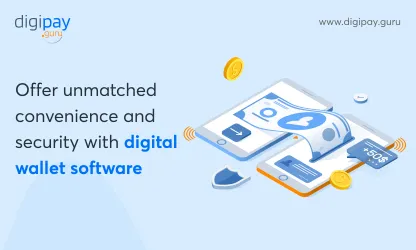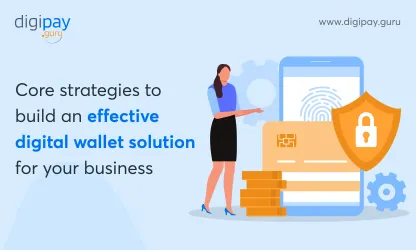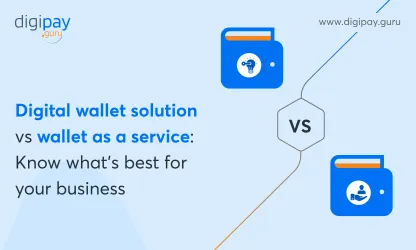The QR code was first invented in 1994 by the Japanese automobile, Denso Wave, led by Masahiro Hara, with the sole purpose of tracking vehicles in the manufacturing process. It wasn’t expected that it could be used outside the automobile industry, especially in payment systems. But today we all know how QR codes have transformed the payment industry.

Characteristics of QR code
There can be various versions of Barcodes like 1D, 2D, and so on. But the most popular is the 2D version called QR Code. QR codes come in modules and are used to store information.
- The current version of the QR code (Module 1) is 14, which has a size of 73 x 73, with the capability of storing up to 1,167 digits.
- The largest version (Module 2) is 40 with a size of 177 x 177 and can store up to 7,089 digits.
- There is also an option for a Micro QR code (Module 4) - size: 17*17, capacity: 35 digits.
In payments, as the URLs or the data contained in the code, is encrypted, it's secure and convenient for payment processing. EMV QR Code technology enables merchants to provide their customers with a wide range of payment options using one QR code at checkout.
Types of QR codes
There are two types of QR Codes:

| Dynamic QR Codes | Static QR Codes |
|---|---|
| A dynamic QR code is a type of QR (Quick Response) code whose information can be edited and updated after it has been printed or displayed. | A static QR code is a type of QR (Quick Response) code that contains a fixed piece of information that cannot be changed after it has been printed or displayed. |
| In this QR code, the URL can be changed with any page of the website, as desired by the merchant. | In this QR Code, the URL of the actual destination website is placed directly in the QR code. |
| It is used for dynamic payments and marketing activities across all businesses. | It is used to facilitate simple and quick payments for businesses. |
| These QR codes can track the number of scans received and know the location & device used to scan the code. | These QR codes do not have tracking functions. |
| Dynamic QR codes facilitate automatic payable amount and all related information for payments when it is scanned. | Static QR codes facilitate manual input of the amount payable while it is scanned. |
How do QR code payments work?
One major difference between QR codes and barcodes is that the QR codes are scannable from both ways, i.e., via paper and screen. On the other hand, linear barcodes are scannable only from paper. That’s precisely the reason why you see QR codes both on apps as well as at online stores.
To scan a QR code, you need to have one of the following things:
- A barcode reader with the capability to scan QR codes.
- Tablet or a smartphone with an inbuilt camera.
Nowadays, many QR code scan apps are allowing users to scan the QR codes with the utmost ease. All the user has to do is open the camera and place it towards the QR code, which will immediately identify it and subsequently open a push notification. Then the user has to just tap on it to finish the operation.
Some payment and banking apps can process QR codes for bank transfers and payments. There are many ways in which QR codes can be processed. Some of these ways are:
Scanning recipient’s QR code with a smartphone
In this process, the user has to open the phone camera or the relevant QR code scanner app. After that, they have to scan the code displayed on an individual product, paper bill, or at a store’s checkout. Various offers and loyalty points might also be applied via the application in case it’s a store-specific application.
Retailers scanning QR code on user’s phone screen
In the QR code payment process, the user opens the payment app once the total transaction amount is confirmed in the POS system of the retailer. The QR code payment app displays a QR code that identifies with the user’s card details. The retailer then scans the QR code with a scanner, thus concluding the transaction.
App-to-app payments
In this process, both the sender and the recipient open their applications. The sender then scans the unique QR code generated in the recipient’s application. The sender, at last, confirms the amount to be paid and taps to complete the payment.
How are merchants adopting QR code payments
QR codes are making lives easy for merchants and businesses. Let's discuss the use cases showcasing how merchants accept payments with QR code.
Fuel retailers
Fuel retailers can also use QR code payment solution for easy payments for their users. There are fuel retail wallet solutions that allow users to fuel their cars by simply entering the amount (in currency) of fuel in the application. These applications come with multiple payment modes, including scan and pay with QR code.
E-ticket booking
QR codes are used in E-ticket booking businesses. The E-ticket booking application enables users to book tickets for buses, flights, trains, movies, amusement parks, and many more by just making a few clicks on their phone. These apps have multiple modes of payment, and QR code payment is one of them.
Toll payments
Toll booths can also use QR codes to facilitate quick and easy acceptance of toll payments. There are toll payment wallet apps that allow the user to make cashless toll payments. These apps include multiple cashless payment options like QR code payments, RFID, and NFC cards.
Parking payments
QR codes can be used as a mode of payment in parking payment solution-providing companies. A parking payment solution allows users to search for and book their parking space through a mobile application. Once the parking space is booked, the user can make payment by simply scanning the QR code present at the parking garage.
Street vendors
Even small business owners like street vendors widely uses QR code for business and their minimal range of products. They print a QR code for all their product consisting of their description and price. To purchase any product, the user has to scan the QR code and confirm to make the payment.
Micro-business
Micro-business that has a small range of goods also uses QR codes for payments. Here the merchant generates both the invoice of a particular amount and the QR code. He then displays the QR code on the screen of the smartphone. To make the payment, the customer has to scan the merchant’s generated QR code from their mobile wallet application.
Read More: Automate micro-finance services with Digipay
SMEs (Small and medium-range businesses)
In SMEs, the merchant prints a QR code for each vendor that indicates the cash register location and other details. To make the payment, the customer has to scan the vendor’s QR code. Then the vendor sends the receipt to the customer’s smartphone from the cash register. Finally, the customer confirms the payment.
Apart from these businesses, there are various other businesses where merchant QR payments can be accepted.
- Restaurants
- Hyperlocals
- Departmental stores
- Service providers
- Food trucks
- Entertainment like live events, and movies businesses
- Art like portrait businesses
- Travel Business
How are QR code payments beneficial to merchants
The adoption of QR code payments comes with myriad benefits that help you to reach out to all your potential customers. Let’s have a look at a few of them.
Instant payments
One of the biggest advantages of QR code payments is that it facilitates instant acceptance of payments. QR code payments are extremely quick compared to other payment modes. The user just has to open the QR code scan app, scan the QR code, and confirm to process the payment. The users can make payments in just a few seconds.
Top-grade security
Making payments via QR codes is very secure. It’s because the QR code is nothing but a tool to exchange information. And so, any data transferred via QR codes are encrypted, thereby making the payment foolproof and secure.
Easy to set up
Setting up QR code payments is extremely easy as you don't need much infrastructure but just a smartphone with a camera and a QR code, either printed or digitally. QR code payments also eliminate the requirement of point of sale machine or any other special payment device.
Higher reliability
QR code payments are a foolproof payment method as it eliminates the probability of any kind of error. The pattern of black boxes (QR codes) consists of unique data that enhances the reliability of the QR code payments.
Improves customer experience
The adoption of QR code payments allows customers to pay with their desired digital wallets. This makes the customer journey of making payments smoother and bridges the gap between the face-to-face and digital worlds.
Interested in adopting QR code payments for your business?
DigiPay.Guru is armed with multiple cashless payment options to incorporate into your business, such as QR code payments, NFC, USSD, and virtual cards. The QR code payments can make your customer’s transactions a whole lot easier and quicker.
We are on a mission to provide businesses with safe, transparent, instant, and convenient payment solutions all across the globe. If you are a business owner who wants to add a QR code payment system to their solution, get in touch with our experts. Let’s discuss your needs and help you implement them in the right way.





